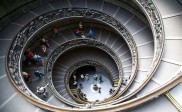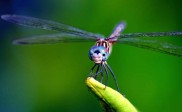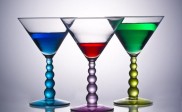The Essentials of Backlighting in Photography
One effective way in which you can use light to provide dramatic impact to your shots is with the backlighting technique. As the term suggests, the light source is behind your subject as you capture the image. With the light in this position, your subject either becomes silhouetted if it is opaque, or it can show off the details of the subject if it is translucent or transparent.
Backlighting can create silhouettes – when an opaque subject is between the lens and the light source, the subject’s silhouette is created. The subject becomes a black shape, and the fine details of its edges are outlined, such as hair. However, the subject’s form and body detail vanish. The stronger the light source, the more distinct are the light and shadow areas. People, trees, mountains and buildings are great subjects for silhouettes.

Photo by vramak
Backlighting can display the subject’s body details – some subjects are translucent by nature, and when bright light hits them from behind, their inner workings and details are made visible by this backlight. Some examples are flowers, leaves, and thin plastic. When these are backlit, their colors also appear more vivid, which adds even more visual interest.

Photo by girlingearstudio
What to keep in mind when using the backlighting technique:
• When using the backlighting technique, bear in mind that your light source is facing in the direction of the camera lens. This increases the risk of overexposure, burnt out highlights and light flares. To avoid these issues, play around with the angle and position of the subject, the intensity of the light and your camera’s exposure settings.
• Your exposure settings will have a huge impact on the outcome of the shot. A slow shutter speed will let in a lot of light, but it will also increase the chances of camera shake or motion blur. A large aperture opening will also allow more light through to the sensor, but keep in mind that the larger the opening, the shallower the depth of field. Lastly, a high ISO setting will let in more light but at the risk of image noise or film grain. Experiment with your exposure and take some test shots until you have adjusted the exposure to your liking.

Photo by Lightstaff
• Try using a lens hood when backlighting your subjects. This will help cut incidental light and lessen lens flares that can burn some areas in your shot.
• Sunlight is an effective light source in backlighting nature subjects, from tiny weeds to majestic mountains. It can create dramatic silhouettes of trees, as well as show the delicate and intricate patterns of flower petals and leaves. Since sunlight is often scattered throughout the landscape, some backlit subjects may not turn out entirely dark against the sun.

Photo by David Paul Ohmer
• Directional lights that give off a strong light beam can provide fantastic backlighting effects. Spotlights, floodlights, pin lights and the like can be used to enhance dramatic visual impact for a large scene such as a concert stage. Bonfires, a flashlight, a table lamp, or even candles can also create fascinating images. Remember that the light source you use will also add to the atmosphere of the shot.

Photo by Martin Cathrae
Backlighting is often used by both professional and amateur photographers. It can certainly add dramatic impact, and with this technique you can make gorgeous and striking images out of ordinary subjects and scenes.



